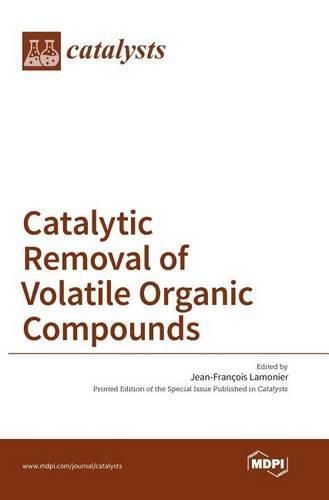Readings Newsletter
Become a Readings Member to make your shopping experience even easier.
Sign in or sign up for free!
You’re not far away from qualifying for FREE standard shipping within Australia
You’ve qualified for FREE standard shipping within Australia
The cart is loading…






This title is printed to order. This book may have been self-published. If so, we cannot guarantee the quality of the content. In the main most books will have gone through the editing process however some may not. We therefore suggest that you be aware of this before ordering this book. If in doubt check either the author or publisher’s details as we are unable to accept any returns unless they are faulty. Please contact us if you have any questions.
The degradation of air quality by the release of volatile organic compounds (VOC) into the air particularly harms human health and our environment. Regulation of outdoor VOC emissions are required to prevent the formation of ground-level ozone, which is principally responsible for photochemical smog. Indoor emissions of VOC have been the subject of recent consideration from many governments around the world because of the adverse impact of VOC on the health of people exposed to them.
Heterogeneous catalytic oxidation is regarded as the most promising technology to control VOC emission with low energy consumption and with selective conversion into harmless molecules. For this application, the use of engineered transition metal containing nanomaterials as catalysts is of interest, because of the high price and limited resource of noble metals most commonly used in practice due to their high intrinsic activity. Moreover, the high volume and low VOC concentrations in air could require the coupling of catalytic oxidation process with other technologies, such as adsorption and non-thermal plasma, in order to control the emission with reduced operating costs.
The aim of this Special Issue is to cover promising recent research and novel trends in the fields of outdoor and indoor VOC abatement using different technological approaches and including recent developments in material chemistry to achieve more efficient processes.
$9.00 standard shipping within Australia
FREE standard shipping within Australia for orders over $100.00
Express & International shipping calculated at checkout
This title is printed to order. This book may have been self-published. If so, we cannot guarantee the quality of the content. In the main most books will have gone through the editing process however some may not. We therefore suggest that you be aware of this before ordering this book. If in doubt check either the author or publisher’s details as we are unable to accept any returns unless they are faulty. Please contact us if you have any questions.
The degradation of air quality by the release of volatile organic compounds (VOC) into the air particularly harms human health and our environment. Regulation of outdoor VOC emissions are required to prevent the formation of ground-level ozone, which is principally responsible for photochemical smog. Indoor emissions of VOC have been the subject of recent consideration from many governments around the world because of the adverse impact of VOC on the health of people exposed to them.
Heterogeneous catalytic oxidation is regarded as the most promising technology to control VOC emission with low energy consumption and with selective conversion into harmless molecules. For this application, the use of engineered transition metal containing nanomaterials as catalysts is of interest, because of the high price and limited resource of noble metals most commonly used in practice due to their high intrinsic activity. Moreover, the high volume and low VOC concentrations in air could require the coupling of catalytic oxidation process with other technologies, such as adsorption and non-thermal plasma, in order to control the emission with reduced operating costs.
The aim of this Special Issue is to cover promising recent research and novel trends in the fields of outdoor and indoor VOC abatement using different technological approaches and including recent developments in material chemistry to achieve more efficient processes.